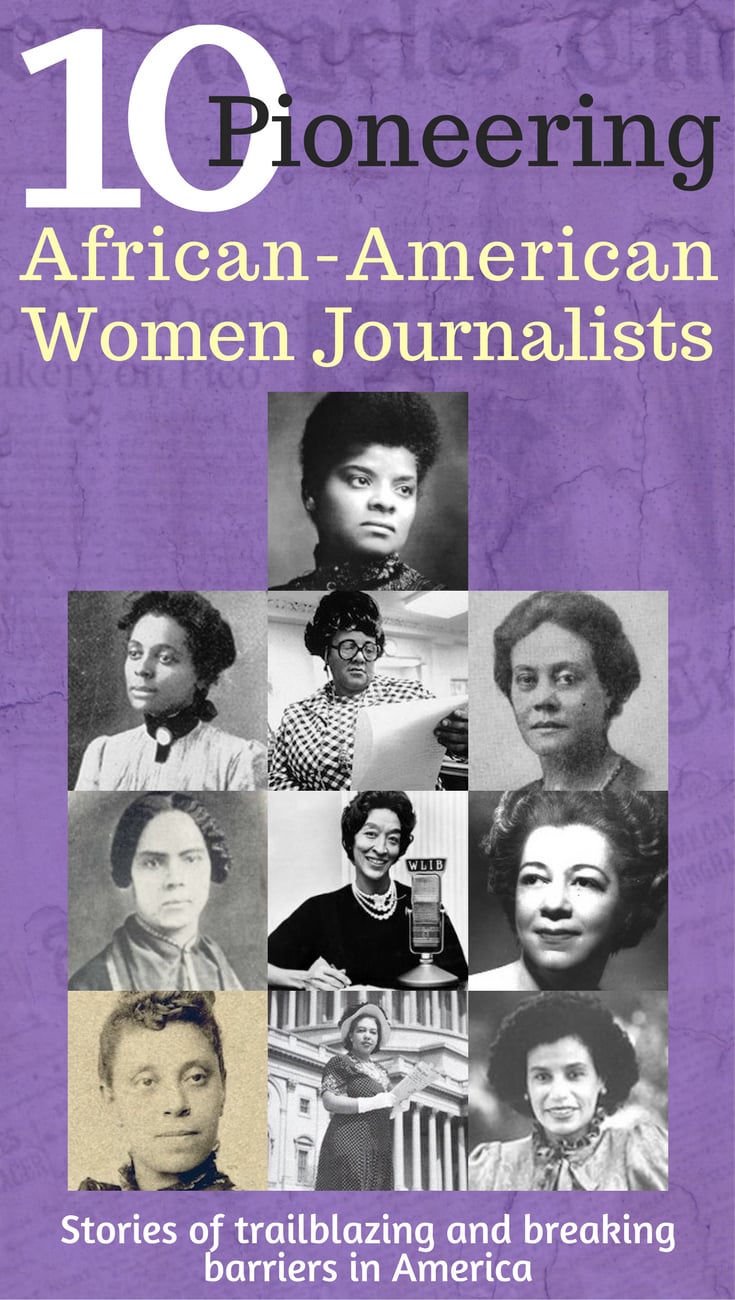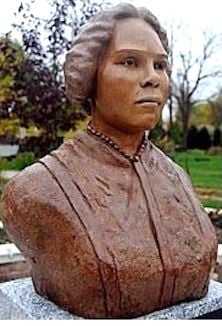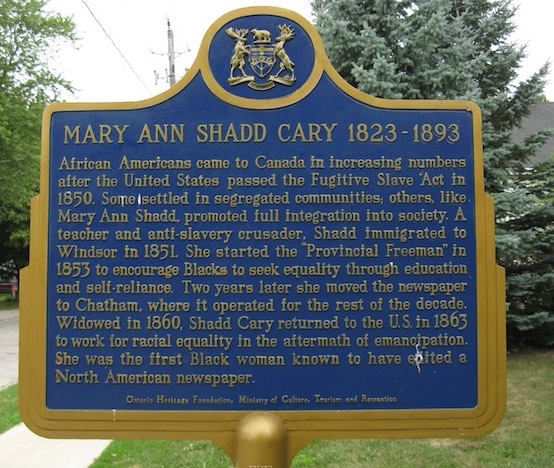Mary Ann Shadd Cary, Abolitionist, Publisher & Attorney
By Nava Atlas | On March 27, 2018 | Updated March 2, 2025 | Comments (0)

Launching The Provincial Freeman, an abolitionist newspaper, in Windsor, Ontario, gave Mary Ann Shadd Cary (1823 – 1893) the distinction of being the first woman publisher of any race or background in Canada, and the first Black woman publisher in all of North America.
In her role as editor and writer forThe Provincial Freeman, Mary Ann advocated for the Black community in the U.S. and Canada. She worked tirelessly to break down the dual barriers of race and gender.
Later an active participant in the women’s suffrage movement in the U.S., she also lectured widely on education and self-reliance. Later in life, she became an attorney.
The Shadd family’s journey
The oldest of thirteen siblings, Mary Ann, was inspired by her parents, A.D. and Harriet Shadd. Both parents were deeply involved in the cause of abolition, and her father wrote for the abolitionist newspaper, The Liberator. The family’s home in Delaware was a stop on the Underground Railroad for freedom-seeking enslaved people making the perilous journey to the northern states or Canada.
In 1840, the Shadds moved their thirteen children from Delaware to Pennsylvania. Delaware, a free state, made it illegal to educate African-American children, so there was no question of staying — education and abolition were the family’s guiding forces.
In Pennsylvania, Mary Ann attended one of the state’s many Quaker schools. After training to be a teacher, she opened a school for African American children. Another jolt came when Congress passed the Fugitive Slave Act in 1850. Now, not only were people escaping slavery in greater peril than ever, but free Blacks in northern states could also be captured and forced into bondage.
. . . . . . . . . .

. . . . . . . . . .
The Provincial Freeman
Mary Ann and her brother Isaac fled to Windsor, Canada, just across the border from Detroit. Once settled in Windsor, Mary Ann started another school, this time with integrated classrooms. This is when she launched The Provincial Freeman.
Her brother Isaac managed the newspaper’s business affairs, and the formerly enslaved Reverend Samuel Ringgold Ward was her co-editor. Not long after, the rest of the Shadd family joined Mary Ann and Isaac in Windsor.
The Provincial Freeman was published from 1853 to 1861, becoming one of North America’s rare Black-owned newspapers. It promoted integration and equality, and featured news stories about culture, education, and politics — many of which Mary Ann wrote or edited.
As founder and co-editor of The Provincial Freeman, she once wrote of herself that she “broke editorial ice” — her way of expressing that she’d cracked a glass ceiling. The paper primarily served the 35,000 Black residents of Ontario, but it was also read in many parts of the U.S., where educated Black readers were eager to see their lives and views reflected in print.
Mary Ann traveled back and forth from the U.S. often, gathering stories for the newspaper. She also gave lectures on self-reliance and education, and encouraged African American families to emigrate to Canada.
During the years when she was running the newspaper, she married Thomas Cary, a Canadian widower with three children, and they had two more of their own. Sadly, her husband died in 1860, just a few years into the marriage.
. . . . . . . . . . .
Mary Ann Shadd Cary Statue at BME Freedom Park, Chatham, Ontario
Another, full-size statue of her was installed at the University of Windsor in 2022
. . . . . . . . . .
Return to the U.S., becoming an attorney
After publishing what would become the paper’s last issue in 1861, Mary Ann returned to live in the U.S. As the Civil War broke out, she felt called to help in the war effort. She became a recruiting officer for the Union Army with a mission mission was to encourage African American men to enlist in the Union Army.
After the war, Mary Ann delved into another new challenge, making the decision to study law at Howard University. There was one problem — the historically Black university didn’t allow women into their law school.
Mary Ann filed a sex discrimination suit and won. It took many years of study, but at the age of sixty, she earned a law degree. Becoming the second Black woman attorney in the U.S., she spent the last ten years of her life practicing law.
There didn’t seem to be a moment’s rest for Mary Ann Shadd Cary, encapsulated by her best-known quote, “It is better to wear out than to rust out.” In the post-war years, she taught school and also was deeply involved in women’s suffrage, working with Susan B. Anthony and others in the movement. She died in 1893 at the age of 70.
. . . . . . . . . .
Photo: Ontario Historical Plaques
. . . . . . . . .
Quotes by Mary Ann Shadd Cary
“Self-reliance is the fine road to independence.”
. . . . . . . . . .
“I speak plainly because of a common origin and because were it not for the monster slavery we would have a common destiny here–in the land of our birth. And because the policy of the American government so singularly set aside allows to all free speech and free thought.”
. . . . . . . . . .
“The field is very important, but the work is incessant.” (on the profession of teaching)
. . . . . . . . . .
“I have broken the editorial ice.”
. . . . . . . . . .
“I’m opening the door for you, for black women, and I’m proud that I’m doing that and I’m trying to create a space for you to have a voice.”
. . . . . . . . . .
“It is better to wear out than to rust out.”
. . . . . . . . . .
“We have been holding conventions for years — we have been assembling together and whining over our difficulties and afflictions, passing resolutions on resolutions to any extent. But it does really seem that we have made but little progress considering our resolves.”
. . . . . . . . . .

You might also enjoy …
10 Pioneering African-American Journalists
More about Mary Ann Shadd Cary
- Wikipedia
- Biography.com
- Overlooked No More — How Mary Ann Shadd Cary Shook up the Abolitionist Movement
- BlackPast
- Library of Congress
Biographies
- A Plea for Emigration by Mary Ann Shadd Cary (1852)
- Mary Ann Shadd Cary: The Black Press and Protest in the Nineteenth Century by Jane Rhodes
Visit
- The Mary Ann Shadd Cary House, where she lived for some time in Washington, D.C. is located at 1421 W Street, though it isn’t open to the public.
- The statue bust honoring Mary Ann Shadd Cary is located in BME Freedom Park in Chatham, Ontario, where she lived, and from where The Provincial Freeman was published for part of its run.


Leave a Reply